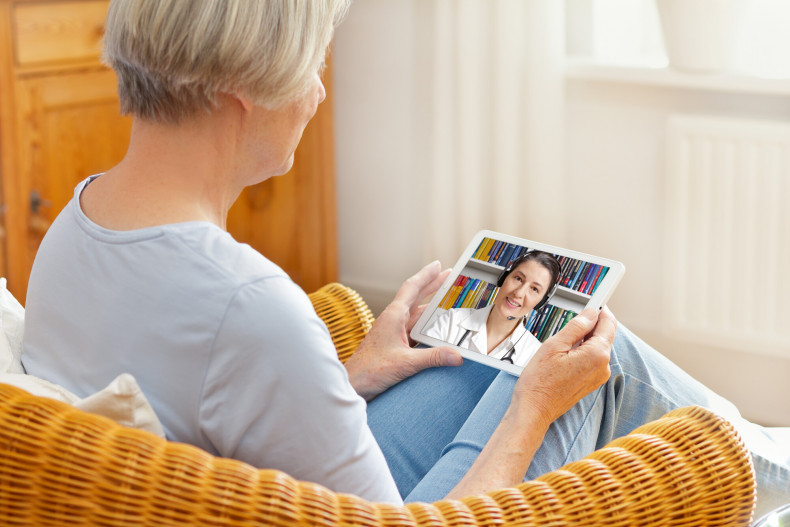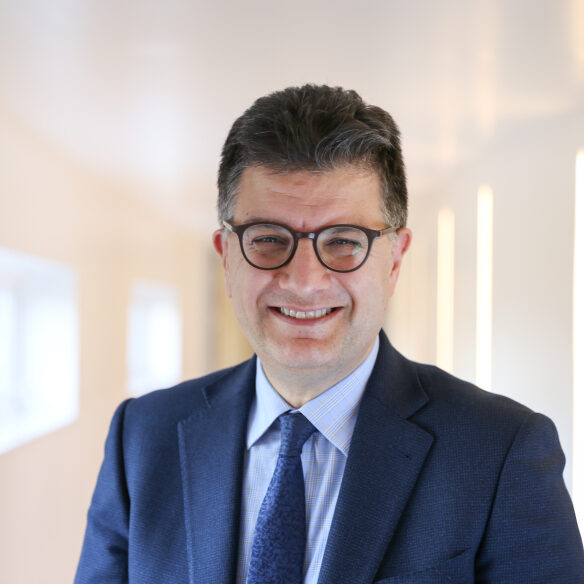The COVID-19 pandemic has triggered a digital transformation in healthcare services. From arranging appointments to monitoring patients, we have had to embrace new technologies to continue providing care in challenging conditions. Our consultant cardiologist, Dr Wajid Hussain, explains why we need to keep up the momentum in remote healthcare.
The pandemic has propelled remote healthcare forward
Over the past decade, many customer-facing industries have embraced digital transformation to improve customer experience with their services, particularly self-service access and personalisation of services.
For example, we now have online retailers that can cleverly use artificial intelligence to recommend clothes in a style we’d love and a size most likely to fit us, saving us time to do more of the things we enjoy doing.
However, healthcare services have unfortunately lagged behind. Whether it has been because it was felt the cost of new technology was too high, not understanding how to use it, or simply just a reluctance to change current ways of working, digitisation of healthcare services has been slow and fragmented compared to other industries. Until recently.
From the way we socialise to the way we travel, the COVID-19 pandemic has greatly disrupted our lives – including how we provide healthcare. We rapidly embraced technology to help continue caring for our patients remotely to reduce the risk of disease transmission.
According to NHS Digital, 57% of appointments in England were face-to-face compared to 39% via telephone or video in September 2020. This compares to September 2019, where 81% of appointments were face-to-face and only 13% via telephone or video.
What’s more, nine in ten GPs have expressed that they want to continue delivering consultations remotely after the pandemic has ended.
Results point towards benefits
Although we have been successful in delivering remote consultations (and this is in line with the NHS Long Term Plan to offer digital-first primary care), we may question whether this is the best solution for all patients, such as those with complex needs. However, there is mounting evidence of the benefits.
In April, NHS England urged all GP practices to implement a total triage system. In a study of practices that had already implemented one of the online triage systems (askmyGP) before the pandemic, it was found that the consultation rate from 1 March to 6 July 2020 was largely similar compared to the same period in 2019 (despite a dip at the start of the March 2020 lockdown).
This demonstrated that practices which had already implemented remote healthcare services were resilient to the dramatic changes brought about by the pandemic. Also, patients that were not technologically proficient could still seek care by calling the practices.
Trials of remote health monitoring services in a range of clinical care settings had also shown benefits before the pandemic. This includes a remote heart and lung disease monitoring service run by Norfolk Community Health and Care Trust, which enables patients to better manage their condition and access heart failure nurses and consultants as needed. Since the introduction of the service, the trust has reported a reduction in A&E admissions and bed days among high-dependency patients.
Another study on a pioneering health technology service that enables doctors to remotely monitor the health of patients living with dementia from home has shown a significant reduction in neuropsychiatric symptoms associated with the condition, such as anxiety and depression. Qualitative data from the study also highlighted that the technology offered carers ‘peace of mind’.
Technology will help get the balance right
“We want patients to be at the centre of decision making about their health and to deliver a service that is most convenient for them – ideally from the safety and comfort of their own homes,” explains our consultant cardiologist, Dr Wajid Hussain, who is also a member of the Remote Care Board for NHSX – the digital arm of the NHS responsible for developing processes for diagnosing, monitoring and caring for patients remotely.
“Integrating new technologies into our healthcare systems to help book appointments, monitor and care for our patients remotely has great potential to improve their physical and mental wellbeing. Patients with chronic conditions don’t want to spend all their time at the GP clinic or hospital and digital tools can empower them to manage their condition, whilst enabling their healthcare team to continue delivering personalised care, efficiently.
“However, we must also be mindful to see our patients when needed and new technologies, such as remote heart monitors, can help us decide when that is. In addition to medical devices, some consumer wearables are also proving useful in assisting with diagnosis and is an area where we expect to see quite dramatic growth soon. It is important for us to continue embracing technology as it will help us provide the best care for our patients.”
Dr Hussain is also the chief clinical information officer for our hospitals and is working across services to make remote care more accessible for patients, such as screening patients for atrial fibrillation in community pharmacies using an innovative hand-held technology. Our hospitals are rapidly advancing digital tools to help improve patient care. Examples include helping patients with lung infections receive intravenous antibiotics and monitoring at home – avoiding a two-week hospital stay, as well as piloting the ‘Patient Knows Best’ platform to help patients access all their medical records online.
Contact us
For more information or to book an appointment, please contact our customer care team.

